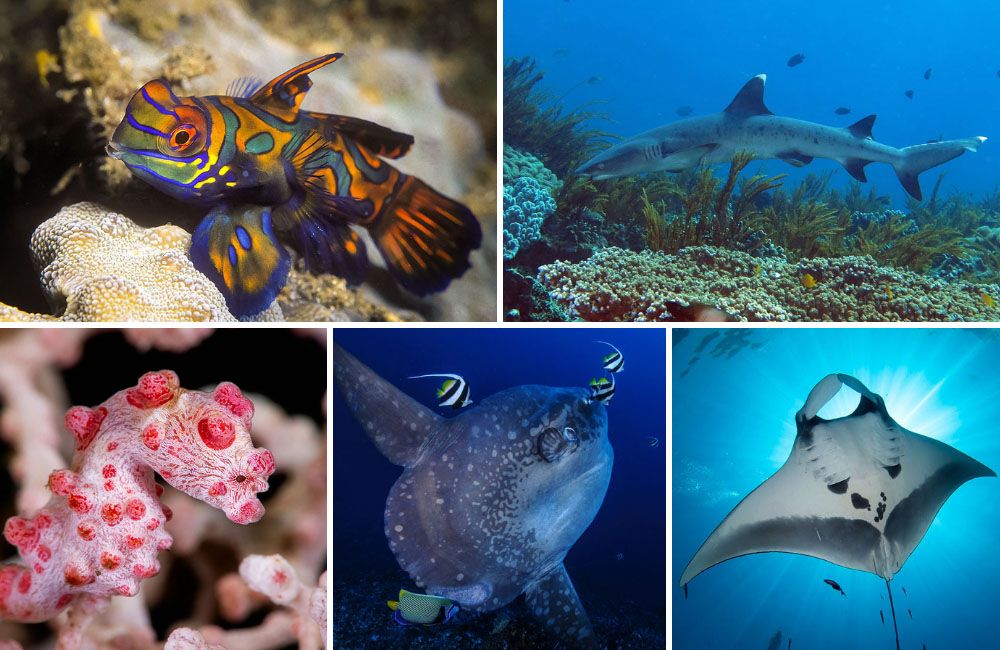
Finding the best scuba diving in Bali isn’t terribly difficult – most of it is pretty amazing – but there’s a lot more to it than many people realise. The variety of diving varies from shallow, easy, muck and macro to deep walls, extreme currents and the biggest of fish – here’s some of the best places to visit.
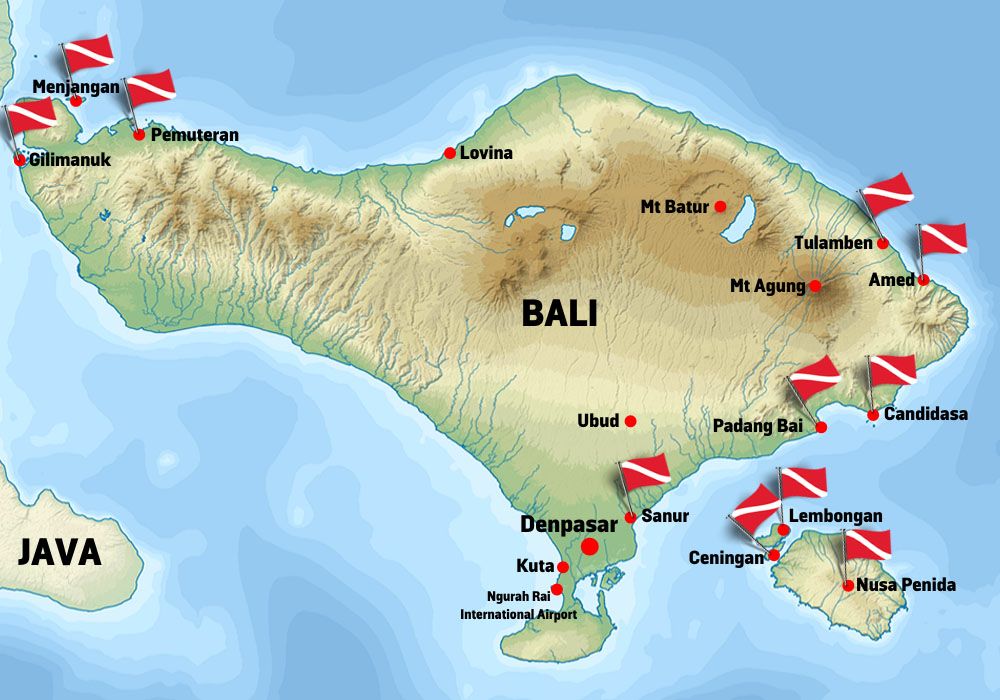
Tulamben
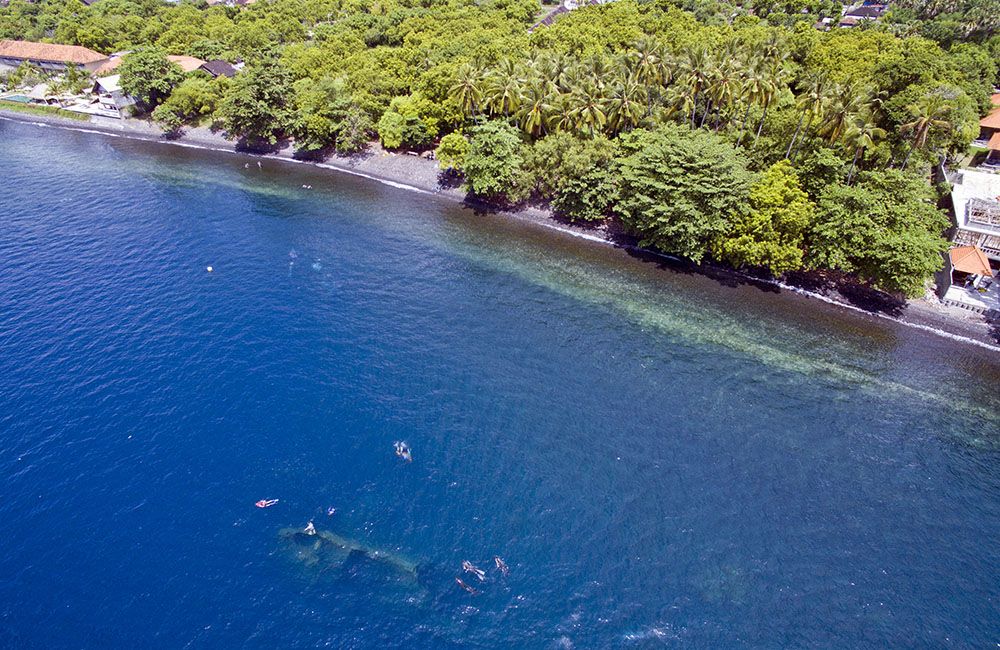
Home to one of the best-known scuba diving sites in Bali, Tulamben originated as a small fishing village located on the northeastern coast of Bali, and, like its neighbour Amed, remains relatively undeveloped compared to the major tourist areas of Bali’s southwestern shores. For divers, the name has become synonymous with the USAT Liberty, a cargo vessel that saw service in both the First and Second World Wars, before being struck by a Japanese torpedo in January 1942. The wreck now lies in a maximum 30m of depth, only 25m from the shore, and the generally favourable conditions make it a perfect wreck dive for all levels of diver, as well as being a favourite snorkelling site. Encrusted with coral, the Liberty is home to a wide variety of critters both big and small, from ghost pipefish and leaf scorpionfish to barracuda and schooling snapper. Blacktip reef and whitetip reef sharks occasionally pass by.
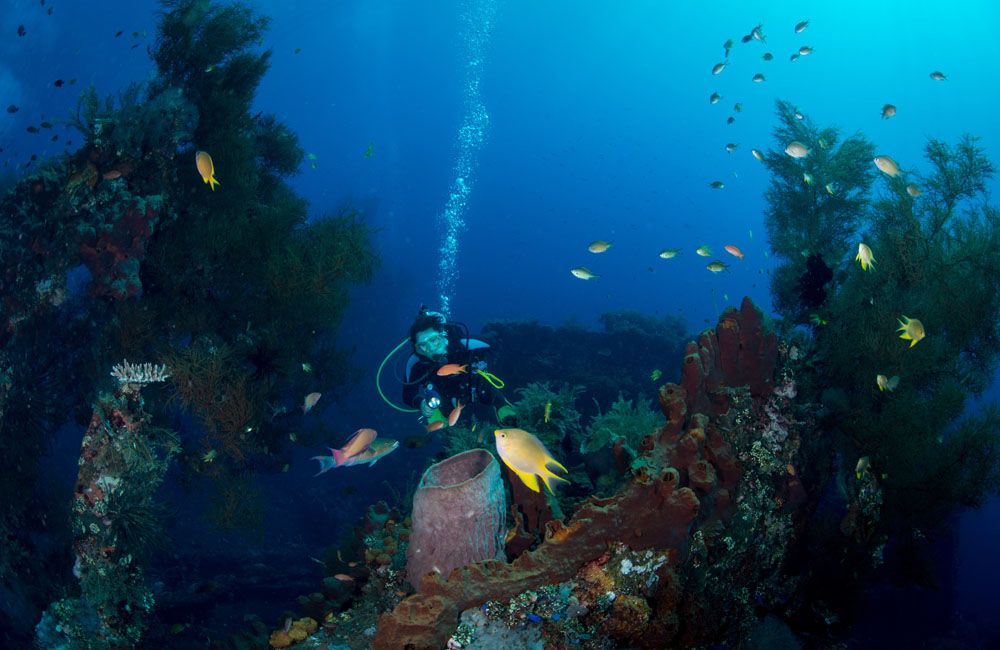
Although the Liberty takes the limelight as one of the best wreck dives in Indonesia – and, indeed, the world – there are plenty of other dive sites, many shared with the dive centres of Amed. Popular dive sites include Seraya, famous for its black sand and some of the best muck-diving in Bali, and the shallow Coral Garden, where Buddhist statues have been installed as an artificial reef, and have since become populated with a wide array of colourful marine life.
Tulamben and the USAT Liberty are popular with day trippers from Sanur, Kuta and the increasingly popular Nusa Islands, so to make the most of the diving and get a head start on the wreck, it’s worth planning to stay in the area to take advantage of early morning dives before the crowds arrive.
Amed
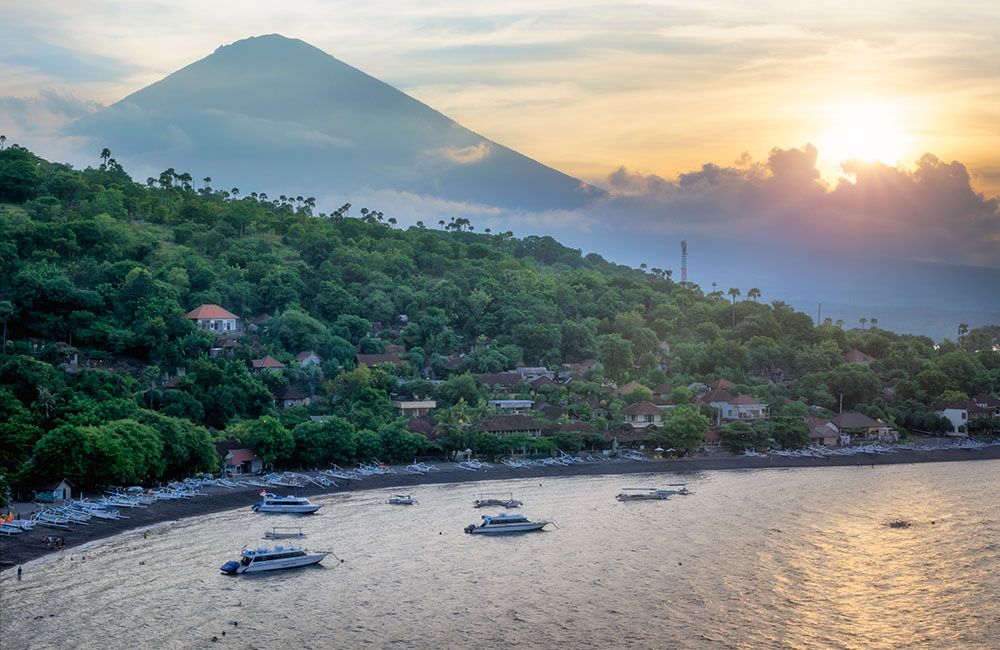
Just south of Tulamben, Amed is a collection of small fishing villages that is turning into one of the most popular diving destinations in Bali. Some of the diving is shared between the two locations. Amed has every type of diving that a diver could want, from coral reefs and walls making for great drift dives, to black sand and muck diving, wreck diving and a huge variety of reef life.
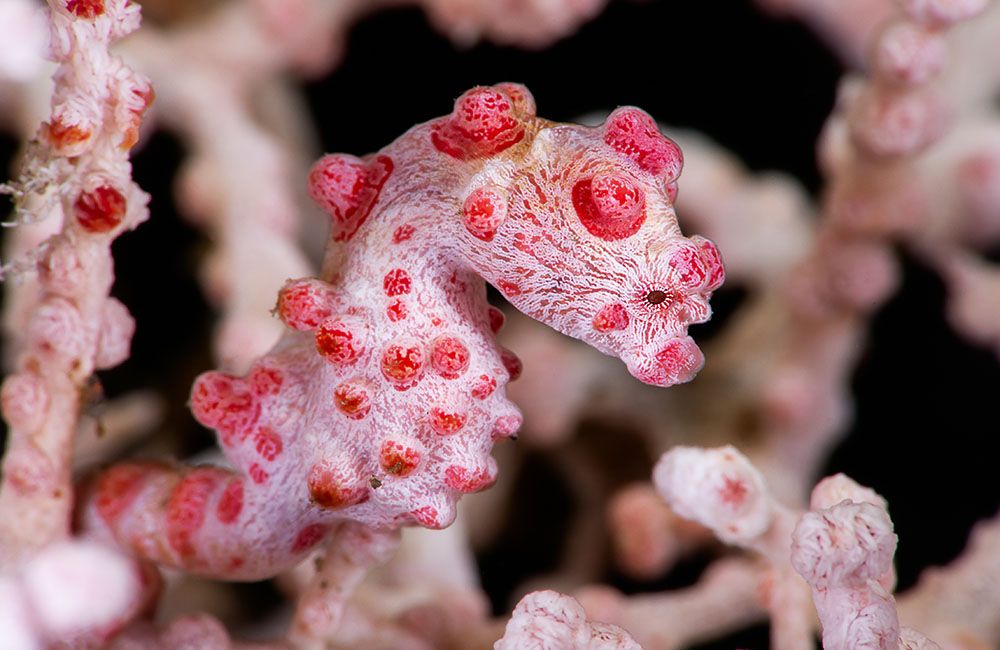
Needless to say, the nearby wreck of the USAT Liberty is popular, but Amed is home to the less well known Japanese Wreck, a shallow dive site set in a sheltered bay and home to some excellent muck diving, including the wonderful pygmy seahorse. A little further down the coast is Surya Rainbow Reef, also excellent for black-sand muck diving, and in between is Amed Wall, an excellent drift dive with a good chance of seeing reef sharks, and the odd manta ray, probably on its way over to Nusa Penida.
With some sheltered locations and little in the way of current, Amed is a popular place for freediving, with a thriving community of instructors and enthusiasts.
Day trips to Amed are available from other locations, but as with a lot of the diving around Bali, it’s always better to be on location to make the most of what’s on offer.
Padang Bai
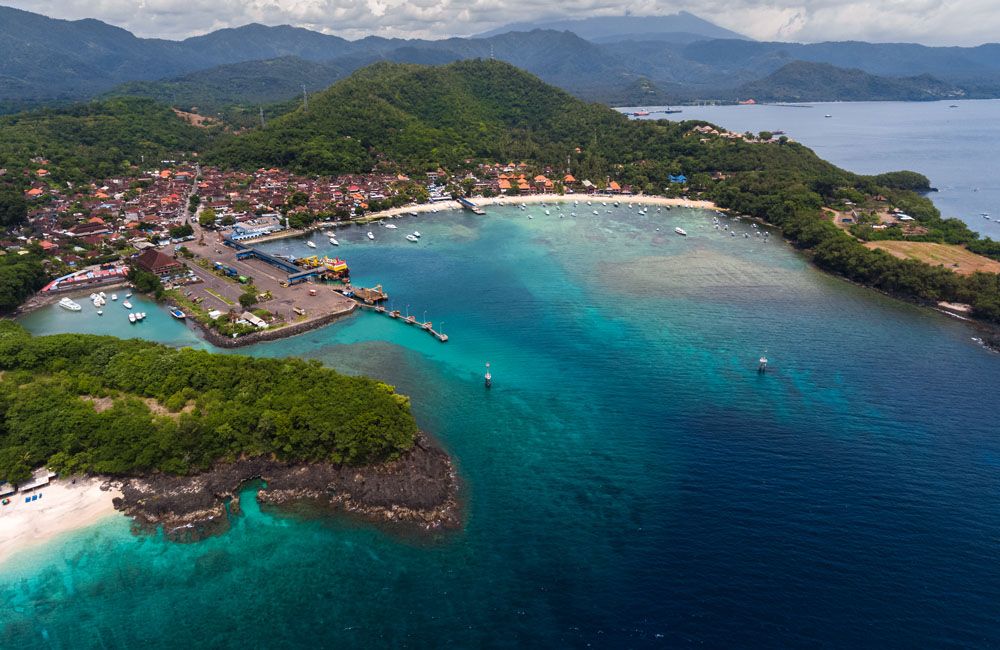
Padang Bai is a small port town on the southeastern coast of Bali, approximately 40km from Denpasar. It has become a popular destination for tourists and is a scheduled port of call for many of the ferries that ply the waters between Bali and its eastern neighbour, Lombok. Padang Bai is particularly famous for muck diving, with the best of it just under the jetty. Here divers can find some of the best of Bali’s macro critters including rhinopias, pipe fish, seahorses, giant frog fish and a plethora of nudibranchs – needless to say, it also makes for some great night diving.

The Blue Lagoon is calm and sheltered and pretty with its shallow coral reefs, and is a great place for snorkelling and dive training, but it can get a little crowded at times. The nearby reefs of Tanjung Sari and Tanjung Jepun are only a short distance from shore for those who like coral diving. For advanced divers who like bigger stuff, the Channel is one of many visitors’ favourites, where sharks and turtles can be spotted on a regular basis, and of course there is always the option of heading over to Gili Mimpang and Gili Tepekong (near Candidasa) or the Nusa Islands to the south for manta and mola encounters.
Candidasa
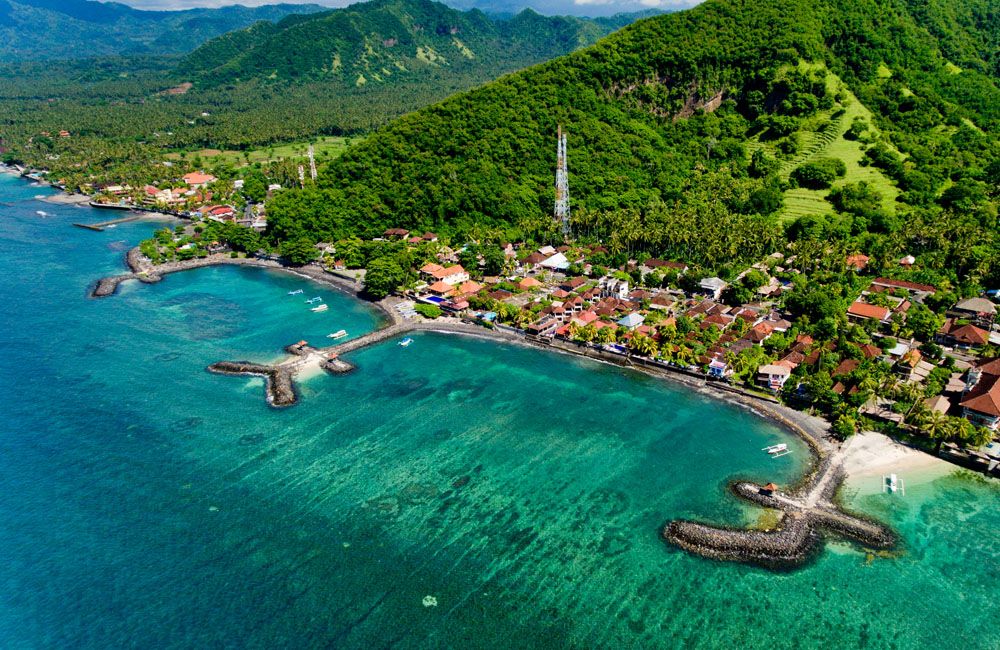
Around 10km northeast along the coast from Padang Bai is the slightly less well known, but very well established, town of Candidasa. As with Amed and Tulamben, many of the dive sites are available from both locations. Highlights local to Candidasa include the fantastic Gili Mimpang and Gili Tepekong (and Gili Selang and Gili Biaha), small islands located just off the coast and often hailed as the best scuba diving available in mainland Bali – if you don’t mind strong currents. Exposed to the full force of local currents through the Lombok Straits, the islands are prone to powerful currents, with divers often bounced around by the ‘washing machine’ effect.

Big currents bring big fish, however, so sightings of larger pelagics around Gili Mimpang and Gili Tepekong are a regular occurrence. Manta rays are regular visitors and, from around July to November, giant southern molas are frequently spotted at cleaning stations around the islands. whitetip reef and blacktip reef sharks are often spotted and – from time to time – there is a chance to spot hammerheads and even the odd whale shark. Macro lovers will not be disappointed – if they can stay in the same place long enough to take a photograph – but calmer waters can be found closer to shore and the more sheltered area around Padang Bai provide a respite from heavy seas.
Candidasa means ‘Ten Temples’ in Balinese, and in between diving there is plenty of time to explore some of the area’s fantastic cultural heritage.
Nusa Penida / Lembongan / Ceningan

Located a 30 minute speedboat ride from Sanur, the trio of islands known as Nusa Penida, Nusa Lembongan and Nusa Ceningan – collectively known as the ‘Nusa Islands’, even though ‘Nusa’ means ‘island’ in Bahasa Indonesian – provide some of the most spectacular scuba diving available from Bali.
Lembongan gained its reputation as a surfer’s hangout back in the 1990s, and for a long time was the home of almost all available accommodation and dive centres, as the villages of Ceningan and Penida remained closed to development. Today, all three islands have their own dive centres, restaurants and homestays available, with some fantastic diving on offer.
The reefs are spectacular, with a vast array of coral distributed around a variety of topographies – the gentle slopes of Penida’s north shore to the deep walls of Ceningan channel, the vast plateau of Mangrove and the shallow sandy patches (plus walls and slopes!) of Crystal Bay, world-famous as the seasonal haunt of the southern mola – the mola mola’s smaller (but still huge) cousin. The spectacular southern coast of Nusa Penida is also home to a resident population of reef manta, with shallow bays where the youngsters feed and a deeper cleaning station where the adults visit on an almost daily basis.
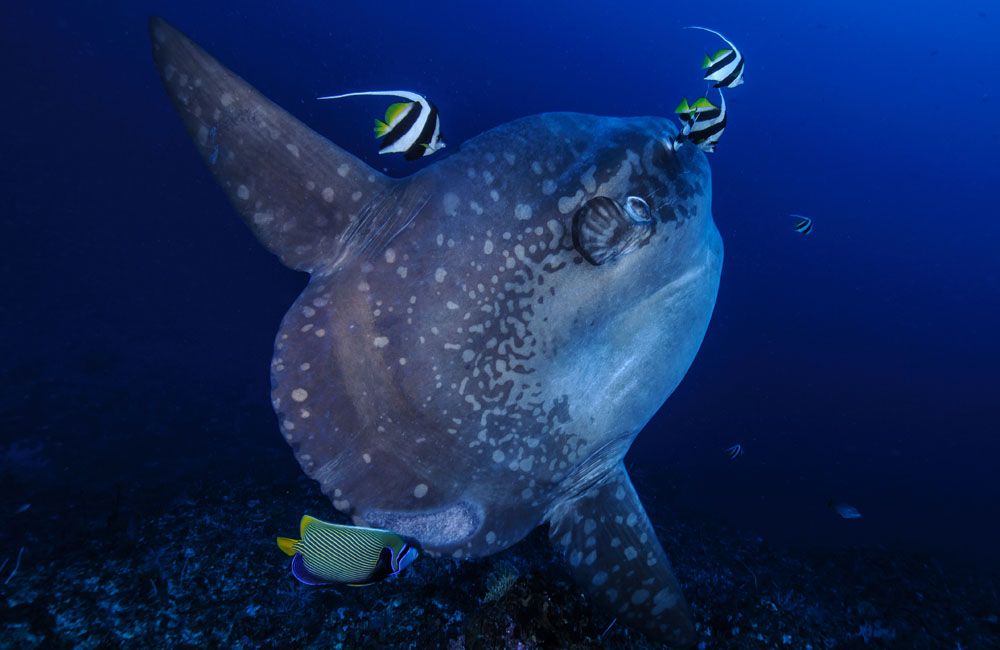
Most of the dive sites can be accessed by day boat from Sanur in Bali, but to make the best of the diving it is far, far better to cross the water from Bali and stay on the islands.
Recreational divers of all levels can enjoy the islands, but some experience is recommended. Currents can be powerful, change rapidly, and down currents are present at places like Blue Corner and outside the bay at Crystal Bay. Keeping safe is easy and the local dive centres won’t visit certain dive sites when the tides are not optimal. Be warned, however – cold currents and thermoclines are everywhere, and the water temperature can vary between 27ºC and 15ºC on a single dive. 5mm wetsuits are essential, 7mm suits and hoods recommended.
Pemuteran / Menjangan / Gilimanuk
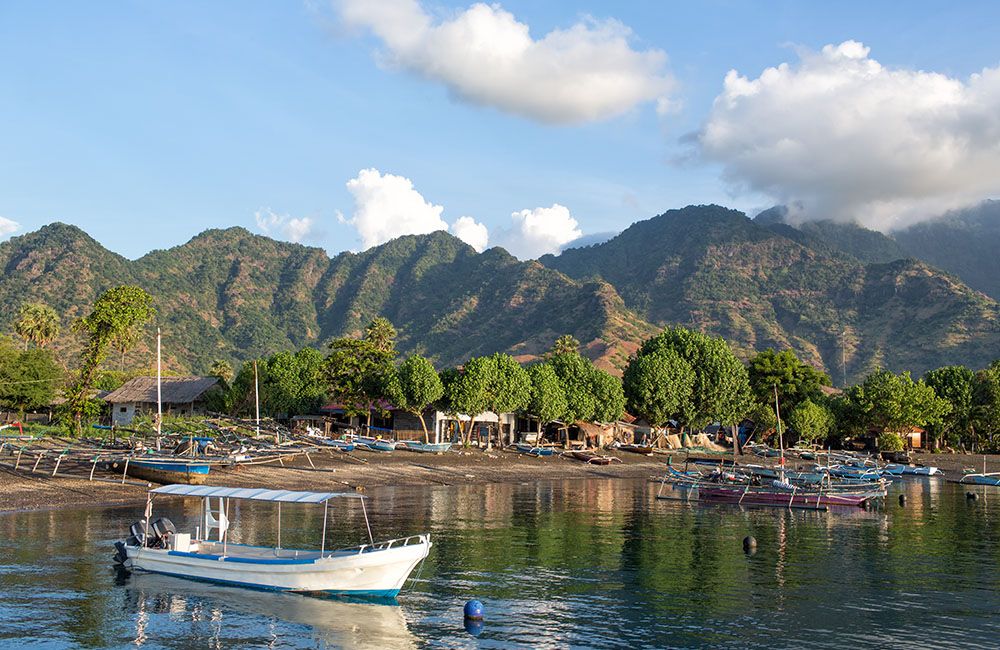
Pemuteran is located on the northern coast of Bali, almost as far away as it’s possible to get from the main tourist districts around Denpasar to the south. As a consequence, the ‘sleepy fishing village’ is growing in popularity as divers and backpackers seek yet another place to escape from the hustle and bustle. It’s a long, but beautiful drive across the countryside – a minimum of three hours (bearing in mind that sometimes it can take over an hour just to get out of Denpasar’s congested highways), but compensated by the stunning scenery that the rough roads pass through.
The dive sites are pretty, if not as spectacular as more southerly destinations, but the shelter and absence of harsh currents mean the reefs can be enjoyed by all levels of divers. Marine life is abundant, with plenty of fish life to be found at Napoleon Reef and Pura Tembok, two of the most popular dive sites in the area. Eagle rays are regularly spotted, as is the occasional whitetip reef shark and – very rarely – the odd manta ray, but in between the corals of the gently sloping reefs are plenty of eels, octopuses, scorpionfish, mantis shrimp and a host of nudibranchs.

Many divers enjoy the simplicity of Pemuteran house reef, especially the mandarin dragonets that appear during the late afternoon. Some visitors have remarked that the trek to the north is worth it just for night-diving Pemuteran house reef. There is also a Biorocks reef restoration project in the bay, and divers and snorkellers can visit the nurseries where coral is grown before being transplanted elsewhere.
Also popular is Menjangan Island, technically a part of Java even though it lies just off the shore of West Bali National Park. Clear water, mild currents and 30-40m walls filled with vibrant marine life make it a popular diving and snorkelling spot.
Gilimanuk is around 30km west of Pemuteran and better known for the port for sea transfer between Bali and Java, but it’s also home to some of the best muck-diving in Bali. The dive sites can be visited from Pemuteran, but it’s also worth stopping in Gilimanuk itself to make the most of the black volcanic sand of Gilimanuk bay, particularly at Secret Bay, where plenty of frogfish, nudibranchs, leaf scorpionfish, seahorses, mimic octopus and other photogenic critters can be found. Mandarin dragonets can also be found in the area and night diving the shallow bays is a particular highlight.
Sanur
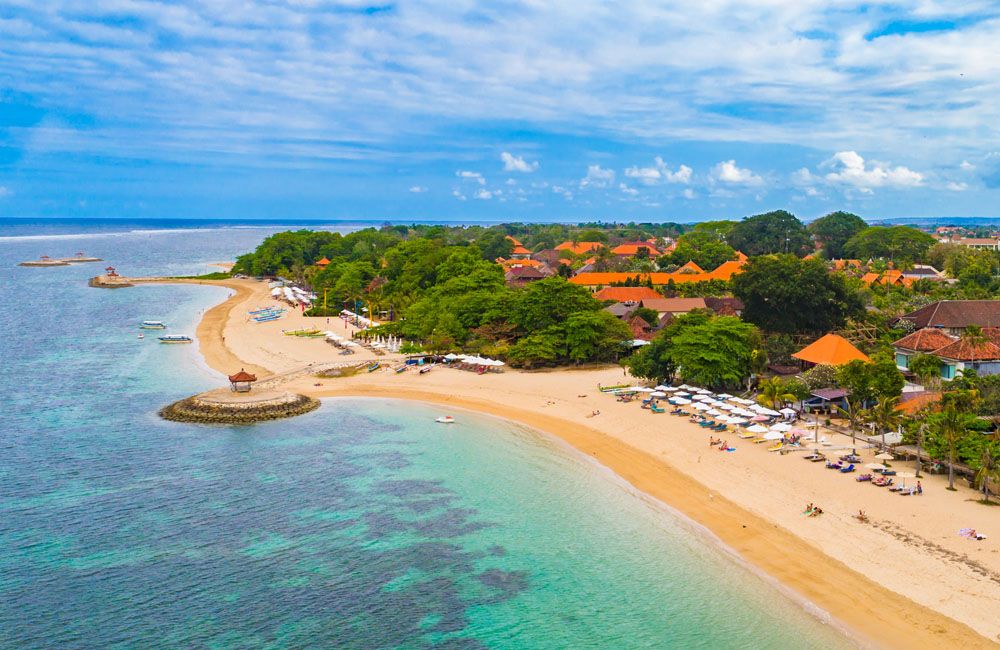
Sanur is an excellent staging post to explore a wide range of Balinese diving destinations, but there’s not a lot of diving in the location itself. The water is often murky and there are only a small number of dive sites – Channel Point is used for training and Penjor Reef has a fair amount of coral and fish life, but neither can compare with the spectacular diving in other locations.
The dive centres in Sanur – of which there are many – offer daily dive trips to Amed and Tulamben, Padang Bai, Candidasa, Nusa Penida and Nusa Lembongan, meaning that tourists can experience the best scuba diving around Bali without having to change locations. Most of the dive centres will offer free transfers from as far afield as Kuta, although that might mean a very early start.
Ferries to other destinations such as Lombok and the Gili Islands depart from Sanur harbour. The town itself is a colourful tourist destination, busy, but a little more laid back than Kuta Beach and its nightlife. Accommodation from inexpensive homestays to luxury hotels is available, in a thriving city packed full of modern conveniences. It’s fair to say that most of the dive locations around Bali are best enjoyed when you stay on site, but for those who prefer a little more comfort and convenience, Sanur offers a wide range of possibilities.
Useful Information
When to go
High Season is July-August and December-January also gets very busy, as does the period around Easter. Rainy season is from October to March, but if you don’t mind a spot of very heavy rain, it’s still a good time to visit. April – June is a great time to visit – it’s low season for tourists and dry season for the weather. The best time to see molas around Nusa Penida is July-October, which makes September a good time to visit if you don’t mind a spot of (very heavy) rain.
Getting there
As of October 2022, flights to Bali from London (18h-ish with a stopover in Dubai) start at around £700 from London during low season; rising to around £1000 in high season, although you might be able to find lower prices if you’re prepared to shop around and don’t mind taking a bit of extra time to get there.
Visa (October 2022)
British citizens can purchase a visa on arrival at the airport which currently costs IDR500,000 (£30). The visa is valid for 30 days and can be extended once, for another 30 days, by applying at an immigration office in Indonesia.
Covid entry requirements (October 2022)
Fully vaccinated travellers can enter Indonesia without a PCR test, but must show proof of their status (UK NHS/EU DCC apps are accepted), download the pedulilindungi tracking app, and have their temperature tested – which will result in a PCR test and quarantine if raised. Unvaccinated travellers will need to take a PCR test and quarantine in a government-approved at their own expense for 5 days before taking a second test.
Boosters may be required for some internal travel in Indonesia. Check with your airlines if you plan to travel outside Bali during your visit.
The information above is correct as of 14 October 2022, but may change with little notice. Always make sure you check current visa and entry requirements with the UK FCDO (or national equivalent) before travelling
Accommodation
Depending on where you are and what time of year you visit, you can find a basic, but clean and comfortable room, for £5 a night. A room at a branded economy hotel chain starts from around £25 per night, or you can spend a lot more if you prefer. Out of season you can haggle with homestays to bring the price down, but in high seasons, in some locations, it’s pretty much the other way around!
Diving
Temperature varies depending on where you are, but it can get very cold (down to 15°C) underwater, especially around Nusa Penida, Lembongan and Ceningan during the austral winter. Currents around the Nusa Islands (and also the Gilis dived from Candidasa and Padang Bai) can be extremely powerful, but safe diving practices eliminates most of the danger. Amed, Tulamben and the north of Bali around Pemuteran and Menjangan tend to be calmer and warmer.
- Lookout failure and improper DSMB use caused Scapa diver’s death – MAIB - 18 October 2025
- Dive computer data ‘lost’ following death of 12-year-old Dylan Harrison - 17 October 2025
- Miami Seaquarium, former home of Lolita the orca, permanently closed - 16 October 2025


